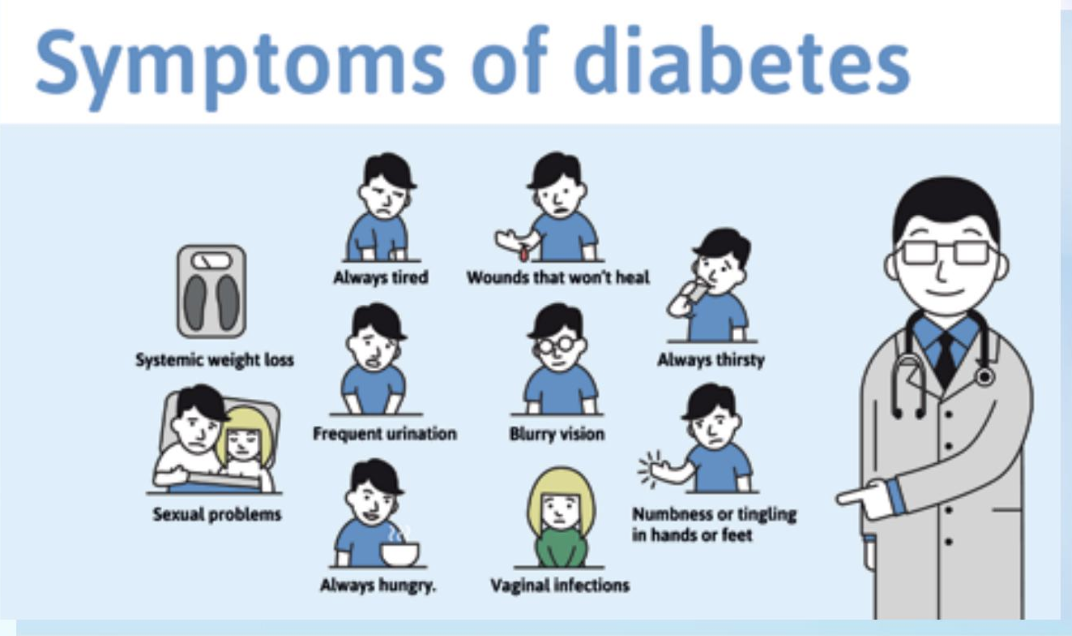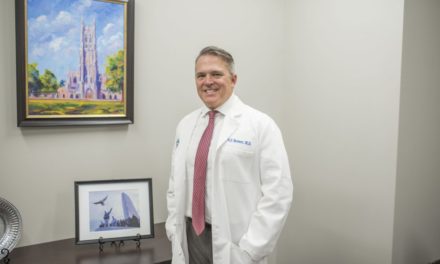Prediabetes is an intermediate stage between normal blood sugar and type 2 diabetes, where the blood sugar levels are higher than normal, but not high enough yet to be diagnosed as type 2 diabetes. According to the Centers for Disease Control and Prevention (CDC), more than 1 in 3 American adults, or approximately 96 million people, have prediabetes. Prediabetes and type 2 diabetes are also becoming more common in children and adolescents, likely due to the rise in childhood obesity. Prediabetes increases risk of type 2 diabetes, heart disease, and stroke.
The underlying cause of prediabetes is insulin resistance. Insulin is the hormone made by our pancreas which works on the cells and lets them use blood sugar as energy. In prediabetes, the cells don’t respond normally to insulin and the pancreas makes more insulin to try to get cells to respond. Eventually when the pancreas is unable to keep up with the insulin resistance, blood sugar rises, leading to prediabetes and later, type 2 diabetes.
What is concerning about prediabetes is that it usually does not have any symptoms and therefore, often goes undetected until serious health problems occur. More than 80% of American adults with prediabetes do not know they have the condition. Screening of people at risk is the key to early diagnosis and prevention of type 2 diabetes. The risk factors include being overweight, being age 35 or older, having a first-degree family member with type 2 diabetes, having a sedentary lifestyle (physically active less than 3 times a week), having a history of gestational diabetes (diabetes during pregnancy) or giving birth to a baby who weighed more than 9 pounds, having HIV or polycystic ovarian syndrome (PCOS). Smoking poses an additional risk in prediabetes and diabetes; stopping smoking is of paramount importance to prevent cardiovascular complications. Race and ethnicity are also a factor: African Americans, Hispanic/Latino Americans, American Indians, Pacific Islanders, and some Asian Americans are at higher risk.
Prediabetes screening is also recommended in children aged 10 years or above who are overweight or obese and who have one or more other risk factors for type 2 diabetes, such as family history of type 2 diabetes, race or ethnicity with an increased risk, mother with gestational diabetes, or other conditions associated with prediabetes like PCOS, high blood pressure, high cholesterol, or low birth weight. Children and adults who have prediabetes should be tested for type 2 diabetes every year or more often if they experience a change in weight or develop signs of diabetes such as increased thirst, increased urination, fatigue, or blurred vision.

Diagnosis of prediabetes is based on one of the following blood tests: hemoglobin A1C, fasting blood sugar (after 8 hours without eating) and an oral glucose tolerance test (performed fasting in the morning, with blood glucose measured 2 hours after ingestion of a 75-g oral glucose load). Glycated hemoglobin (A1C) test indicates the average blood sugar level for the past 2 to 3 months. Certain conditions like pregnancy or having an uncommon form of hemoglobin can make the A1C test inaccurate.
The good news is that progression from prediabetes to type 2 diabetes is not inevitable. Healthy lifestyle choices including healthy diet, regular physical activity and weight loss can help to lower the risk for developing type 2 diabetes by as much as 58%. These changes can also improve cardiovascular risk factors and even bring the blood sugar level back to normal. A diet low in carbs, fat, and calories with an emphasis on whole grains, legumes, nuts, fruits, vegetables and minimal refined and processed foods is associated with a lower risk of type 2 diabetes. A small amount of weight loss, around 7% of your body weight which is just 14 pounds for a person weighing 200 pounds, can lead to a significant risk reduction. Regular physical activity means getting at least 150 minutes a week of brisk walking or a similar activity – that is only 30 minutes a day, five days a week. The CDC developed the National Diabetes Prevention Program (National DPP), an online resource for lifestyle change programs for preventing type 2 diabetes and providing locations of CDC-recognized diabetes prevention lifestyle change programs. At Ochsner LSU Health Shreveport, a prediabetes group class or an individual session is offered at the diabetes education center with a focus on healthy eating and increasing physical activity.
In summary, prediabetes is a silent disease with serious long-term complications if not detected and treated early. It can be diagnosed with a simple blood test and lifestyle changes can improve outcomes significantly. The best time to act is NOW!
Arshpreet Kaur, MD, FACE, is an Assistant Professor of Endocrinology and the Director of Diabetes Initiatives at
LSU Health Shreveport.









